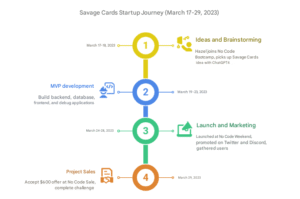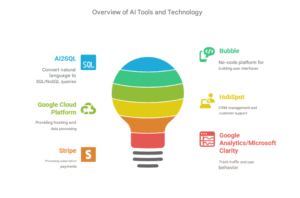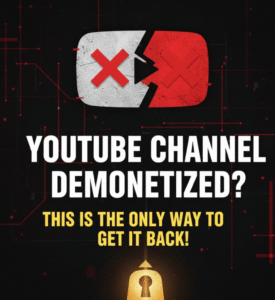
Quick Introduction
- Main Character: Matt Brown, former sports journalist at SB Nation, author of college football books, and founder of Extra Points – an in-depth newsletter covering the business aspects of college sports. He’s super active on Twitter (now X), with 49.5K followers as of 2024, and very well-known in the newsletter community, featured on Beehiiv.com and Newsletter Circle.com. Matt’s reputation comes from original reporting and high-quality behind-the-scenes analysis.
- Implementation Timeline: From April 2019 to present (as of May 2025, about 6 years). Key milestones:
- April 2019: Launched Extra Points as a side project on Substack
- April 2020: Went full-time after being laid off from Vox Media
- November 2021: Sold Extra Points to D1.ticker (~$100,000)
- May 2024: Bought back from D1.ticker, partnered with Dennis Alshuler
- End of 2024: Reached 28,307 subscribers, annualized revenue over $200,000
- Region: Primarily US, targeting college sports professionals, football fans, and students/academics. Matt also expanded internationally through Extra Points Library and D1.classroom, but the main market remains the US since college sports are very specific to America.
Revenue Model

Matt earns money from multiple sources, but primarily from paid subscriptions, combined with content licensing, digital products, and sponsorships. Specifically:
Revenue Sources:
- Paid Subscriptions: Paid newsletter subscription ($9/month or $84/year in 2024) is the main revenue source, accounting for ~90% of income. By end of 2024, 2,000 paying subscribers brought in ~$18,000/month (annualized ~$216,000).
- Content Licensing: D1.classroom provides newsletters and educational materials to universities (like Alabama, Ohio State), serving over 1,000 students (Spring 2023), with 60% discount for students/staff with .edu emails.
- Digital Products: Extra Points Library – database of over 5,000 public documents from 200+ schools, priced at $2,000/year and up for athletic directors and organizations.
- Sponsorships and Advertising: Event sponsorships (Extra Points Bowl) and ad sales through Beehiiv or directly, but only accounts for ~10% of revenue (about $300/month initially, slight increase after hiring sales staff).
- Side Products: Selling stickers, t-shirts (small profit, enough to cover costs) and Athletic Director Simulator 4000 – a sports management simulation game that evolved from a joke into a professional product.
Cash Flow Generation:
- Paid Subscriptions: Free tier (2 newsletters/week, free articles) attracts newcomers, while paid tier (4 newsletters/week, archive access, games, ebooks) generates stable revenue. Conversion rate from free to paid is ~7% (2,000/28,307 in 2024).
- Content Licensing: Partners with universities to sell newsletters and educational materials, targeting sports management and journalism students.
- Digital Products: Extra Points Library serves research needs of athletic directors, but limited customer base due to high pricing.
- Sponsorships: Extra Points Bowl earns money from major sponsorships, combined with Beehiiv advertising (pay-per-click or contracts).
Revenue Statistics:
- 2020: ~$3,000/month (annualized ~$34,000) from 504 paid subscribers ($7/month)
- 2021: ~$4,300/month (annualized ~$51,600) from 679 paid subscribers ($8/month)
- 2022: Over $100,000/year from 1,000+ paid subscribers, D1.classroom, and advertising
- 2024: Over $17,000/month (annualized over $200,000) from 2,000 paid subscribers ($9/month), Extra Points Library, and sponsorships
Operating Costs:
- 2019–2020: ~$500 (microphone, editing software). $28,000 grant from Substack and severance pay helped reduce pressure.
- 2020–2021: ~$2,000/year (part-time staff 4–8 hours/week at $15/hour; small Twitter ads).
- 2022–2024: ~$20,000/year (2 full-time staff, 1 sales person, programmer for Extra Points Library, Beehiiv costs ~$500/year, travel expenses).
- Total costs (2019–2024): ~$50,000 (including equipment, personnel, platforms, advertising).
Profit Potential:
- 2024: Revenue over $200,000, costs ~$20,000, net profit ~$180,000, profit margin ~90%.
- Future: Could increase paid tier pricing ($10/month in 2025?), expand D1.classroom, and sell more Extra Points Library subscriptions.
- Special Note: Model focuses on “true fans” (2,000 paying subscribers), aligning with Kevin Kelly’s 1,000 True Fans theory. Super niche market (college sports business) means less competition but also limits audience scale. Revenue diversification reduces risk from single source dependency.
Tools Used
Matt doesn’t use AI tools, but focuses on manual content creation and traditional tools. Let’s see what he uses:
Substack (2019–2022):
- Used for: Initial newsletter platform, supporting free/paid subscriptions, Stripe payment processing, audience management.
- Pros: Easy to use, but takes 10% of revenue (~$100–200/month in 2022), lacks advanced growth tools.
Ghost (2022):
- Used for: Replaced Substack to reduce costs, customize interface.
- Pros: Flexible, but lacks growth tools (referrals, promotions), needs programmer support.
Beehiiv (2023–present):
- Used for: Manage subscriptions, advertising, and growth (referrals, promotions).
- Pros: Low cost (~$500/year), integrated ad network, good analytics (49% open rate, 2.45% click rate), suitable for niche newsletters.
Stripe:
- Used for: Process payments from subscriptions and digital products.
- Pros: Easy integration with Substack, Ghost, Beehiiv, fast payments.
Twitter (now X):
- Used for: Main growth channel (30–50% of new subscribers), content promotion, audience engagement.
- Pros: Reached 49.5K followers (2024), but effectiveness declined after Twitter algorithm changes (2022–2023).
Discord:
- Used for: Build community for paid subscribers (Moon Crew chat room), increase engagement.
- Pros: Free, suitable for niche audiences like athletic directors, fans.
Google Drive (initially) and Custom Interface:
- Used for: Store and distribute Extra Points Library (5,000+ documents).
- Pros: Google Drive unprofessional, so hired programmer (~$5,000) to build user-friendly search interface.
Slack and Trello:
- Used for: Manage team (2 full-time staff, 1 sales person) and workflows.
- Pros: Increase coordination efficiency, helps Matt focus on writing.
FOIA (Freedom of Information Act):
- Used for: Extract public documents from universities to create exclusive content.
- Pros: Provides unique stories, but time-consuming (~4–8 hours/week for part-time staff).
Implementation Process
Matt divided the journey into 6 phases, very systematic:

Phase 1: Launch (April 2019–April 2020)
Actions:
- Launched Extra Points on Substack as side project, leveraging reputation (20,000 Twitter followers, published books).
- Got laid off (April 2020), went full-time, received $28,000 grant from Substack and severance pay.
- Wrote 5 newsletters/week about college sports business (finances, media rights), enabled paid subscriptions ($7/month) within 48 hours.
Details:
- Reached 1,000 subscribers in 72 hours (mostly free), over 100 paying immediately.
- Original content, different from ESPN, targeting professionals and hardcore fans.
Results:
- Built foundation with ~1,000 subscribers, ~100 paying, revenue ~$700/month.
- Costs: ~$500 (microphone, editing software).
Phase 2: Early Growth (April 2020–September 2020)
Actions:
- Increased frequency (4–5 newsletters/week), paywalled content (mailbag) to encourage paid subscriptions.
- Promoted via Twitter (30–50% of new subscribers), partnered with Moon Crew for Discord chat room.
- Hired part-time staff (4–8 hours/week, $15/hour) to handle FOIA, university contacts.
- Offered 60% discount for students/staff (.edu) to expand D1.classroom.
Details:
- Reached 3,421 subscribers (504 paying) by September 2020, revenue ~$3,000/month.
- Sold stickers, t-shirts to cover costs (~$100–200/month).
Results:
- Annualized revenue ~$34,000, enough to consider Extra Points as main job.
- Costs: ~$2,000 (staff, advertising).
- Net profit: ~$31,000, profit margin ~94%.
Phase 3: Expansion and Partnership (2021–November 2021)
Actions:
- Increased price to $8/month, reached 5,400 subscribers (679 paying) by mid-2021.
- Sold Extra Points to D1.ticker (~$100,000, 2x annual revenue), remained main writer.
- Expanded D1.classroom, licensed content to universities.
Details:
- Revenue ~$4,300/month (annualized ~$51,600), advertising ~$300/month.
- D1.ticker provided advertising, technical support, reduced operational pressure.
Results:
- Stable revenue, expansion potential through D1.classroom.
- Costs: ~$5,000 (staff, technical).
- Net profit: ~$46,600, profit margin ~90%.
Phase 4: Diversification (2022)
Actions:
- Switched to Ghost, launched Extra Points Library (5,000+ documents, $2,000/year) and Athletic Director Simulator 4000.
- Reached 11,200 subscribers (1,000+ paying), revenue over $100,000.
- Broke major stories (EA Sports game delay, conference restructuring), increased reputation.
Details:
- Email open rate 40–46%, but paid subscriber growth slowed in Fall 2022.
- Hired programmer (~$5,000) for Extra Points Library.
Results:
- Revenue exceeded six figures, D1.classroom served over 1,000 students.
- Costs: ~$15,000 (programmer, staff, Ghost).
- Net profit: ~$85,000, profit margin ~85%.
Phase 5: Buyback and Optimization (2023–2024)
Actions:
- Bought back Extra Points from D1.ticker (May 2024), partnered with Dennis Alshuler.
- Switched to Beehiiv, increased price to $9/month, reached 28,307 subscribers (2,000 paying).
- Sponsored Extra Points Bowl, sold Extra Points Library, expanded D1.classroom.
- Acquired small newsletter (~1,000 subscribers, kept 650).
Details:
- Revenue over $17,000/month (annualized over $200,000), email open rate 49%, click rate 2.45%.
- Team: 2 full-time staff, 1 sales person.
Results:
- Stable revenue, net profit ~$180,000, profit margin ~90%.
- Costs: ~$20,000 (staff, Beehiiv, travel).
Phase 6: Sustainability and Future (2024–present)
Actions:
- Maintain 28,307 subscribers, focus on high-quality audience.
- Continue original reporting, event sponsorships, digital product sales.
- Plan to try PR, write second book, optimize pricing.
Details:
- Revenue over $200,000/year, costs ~$20,000, net profit ~$180,000.
- Email open rate 49%, click rate 2.45%, super loyal audience.
Results:
- Extra Points became successful independent journalism model, not dependent on big platforms.
- Matt achieved creative freedom, balanced writing and management.
Results Achieved
Revenue:
- 2024: Over $200,000/year (~$17,000/month) from 2,000 paying subscribers ($9/month), Extra Points Library ($2,000/year), D1.classroom, and sponsorships (Extra Points Bowl).
- Total revenue (2019–2024): ~$400,000 (estimated: $34,000 in 2020, $51,600 in 2021, over $100,000 in 2022, over $200,000 in 2024).
Activity:
- Subscribers: 28,307 (end of 2024), from 1,000 (2020), paid conversion rate ~7% (2,000/28,307).
- Engagement: Email open rate 49%, click rate 2.45% (higher than industry average ~30–40%).
- Twitter: 49.5K followers, contributing 30–50% of new subscribers.
- D1.classroom: Served over 1,000 students (Spring 2023), partnered with Alabama, Ohio State.
- Extra Points Library: Over 5,000 documents from 200+ schools, targeting athletic directors, organizations.
Other Achievements:
- Built sustainable independent journalism model, 90% revenue from readers.
- Broke major stories (EA Sports game delay, UCLA costs, Hawaii team journey), solidified reputation.
- Inspired newsletter community through articles on Beehiiv.com, Newsletter Circle.com, Journalists Pay Themselves.com.
Challenges:
- Twitter dependency, risk when platform changed algorithm (2022–2023).
- Social media advertising (Facebook, X) expensive but low paid conversion.
- Competition in crowded newsletter market where advertising favors AI, startups.
- Work/life balance with large writing volume (~10,000 words/week initially).
Key Lessons Learned
Success Factors:
- Unique Content: Original reporting (FOIA, financial analysis, behind-the-scenes stories) not available on ESPN, convincing 2,000 people to pay.
- Niche Market: College sports business has little competition, attracts loyal audience (athletic directors, journalists, hardcore fans).
- Transparency and Personalization: Personal writing (leaving Mormon religion, selling 24 new subscriptions) and cost transparency (travel, FOIA) builds trust.
- Value-Based Pricing: From $7 (2020) to $9/month (2024), reflecting content quality.
Creative Innovations:

- Interactive Products: Athletic Director Simulator 4000 evolved from joke to paid exclusive, educational material.
- Educational Licensing: D1.classroom turned newsletter into learning material, expanded to students, academics.
- Extra Points Library: 5,000+ document database serving athletic directors, different from typical newsletters.
- Event Sponsorships: Extra Points Bowl combines journalism, branding, creates revenue and recognition.
Challenges and Solutions:
- Twitter Dependency: Acquired small newsletter, tried social media advertising (though less effective), leveraged D1.ticker for content sharing.
- Weak Advertising (~$300/month initially): Hired sales staff, sponsored major events, used Beehiiv network.
- Work Overload: Sold to D1.ticker (2021), bought back (2024), expanded team (2 full-time staff, 1 sales person).
- Newsletter Competition: Focused on original reporting, digital products, high-quality audience (2,000 true fans).
Tips for Beginners:

Start Small:
- Launch newsletter on Beehiiv (~$500/year) or Substack (free initially).
- Write 2–3 newsletters/week about niche topics (sports finance, local history).
- Use Twitter, LinkedIn to attract 500–1,000 free subscribers in 3 months.
Build System:
- Enable paid subscriptions ($5–7/month) immediately, paywall exclusive content (deep analysis, original documents).
- Create community via Discord, email (mailbag) to increase engagement.
- Hire part-time staff (~$15/hour, 4 hours/week) for auxiliary work (research, technical).
Marketing:
- Post on Twitter/X, Reddit (r/Newsletter, r/SideHustle).
- Partner with organizations (schools, associations) for content licensing.
- Try digital products (databases, games, ebooks) to add value.
Initial Cost: ~$1,000 (Beehiiv ~$500/year, microphone ~$100, Twitter ads ~$200, staff ~$200).
Learn Skills:
- Watch Beehiiv/Substack tutorials on YouTube.
- Read FOIA documentation to extract public data (if doing original reporting).
- Join Newsletter Circle.com, r/Newsletter to learn from community.
Important Notes:
- Content quality over reader quantity.
- Be transparent about money usage to build trust.
- Be patient for 6–12 months to reach 500–1,000 paying subscribers.
Sources / References
Search case “Case Study Extra Points”



